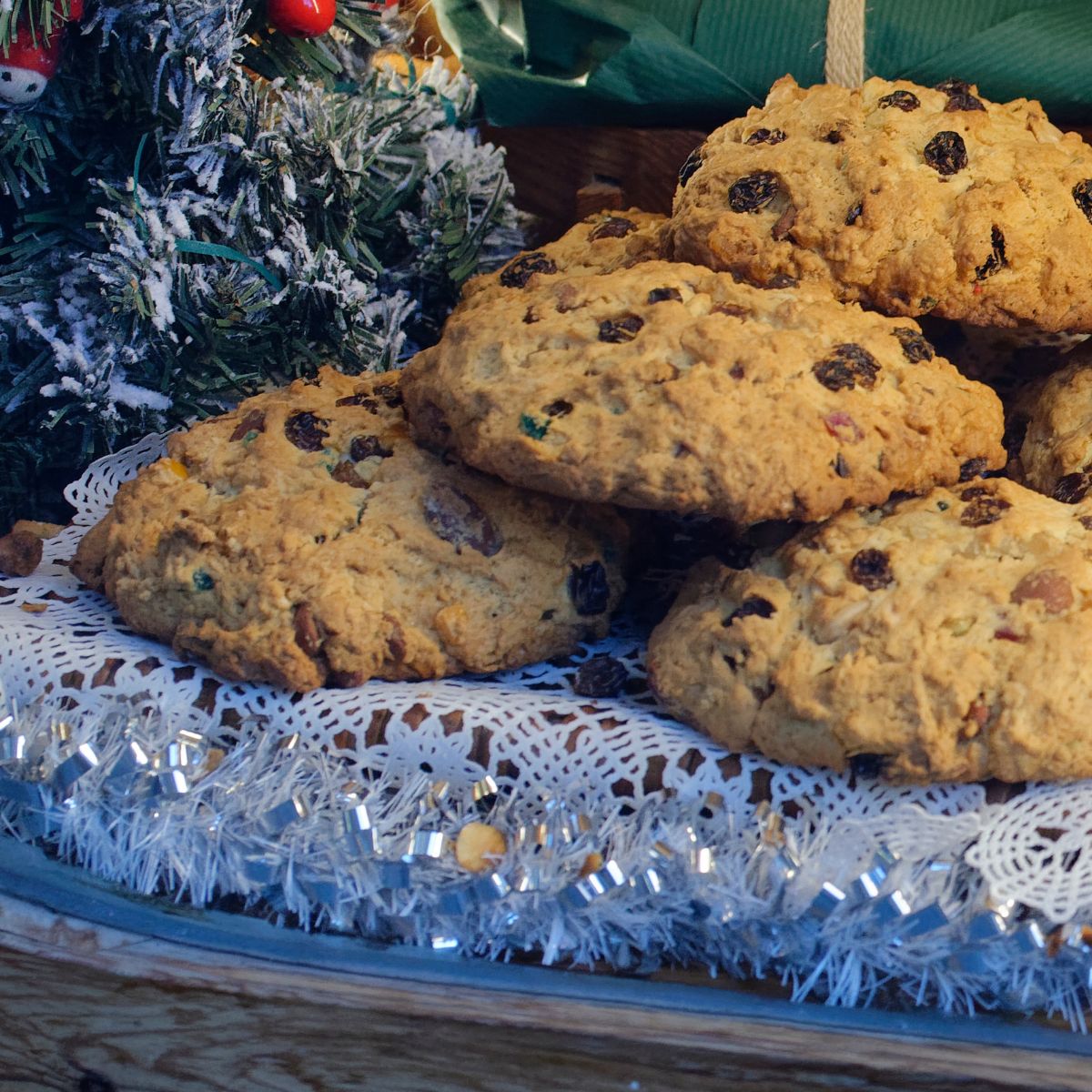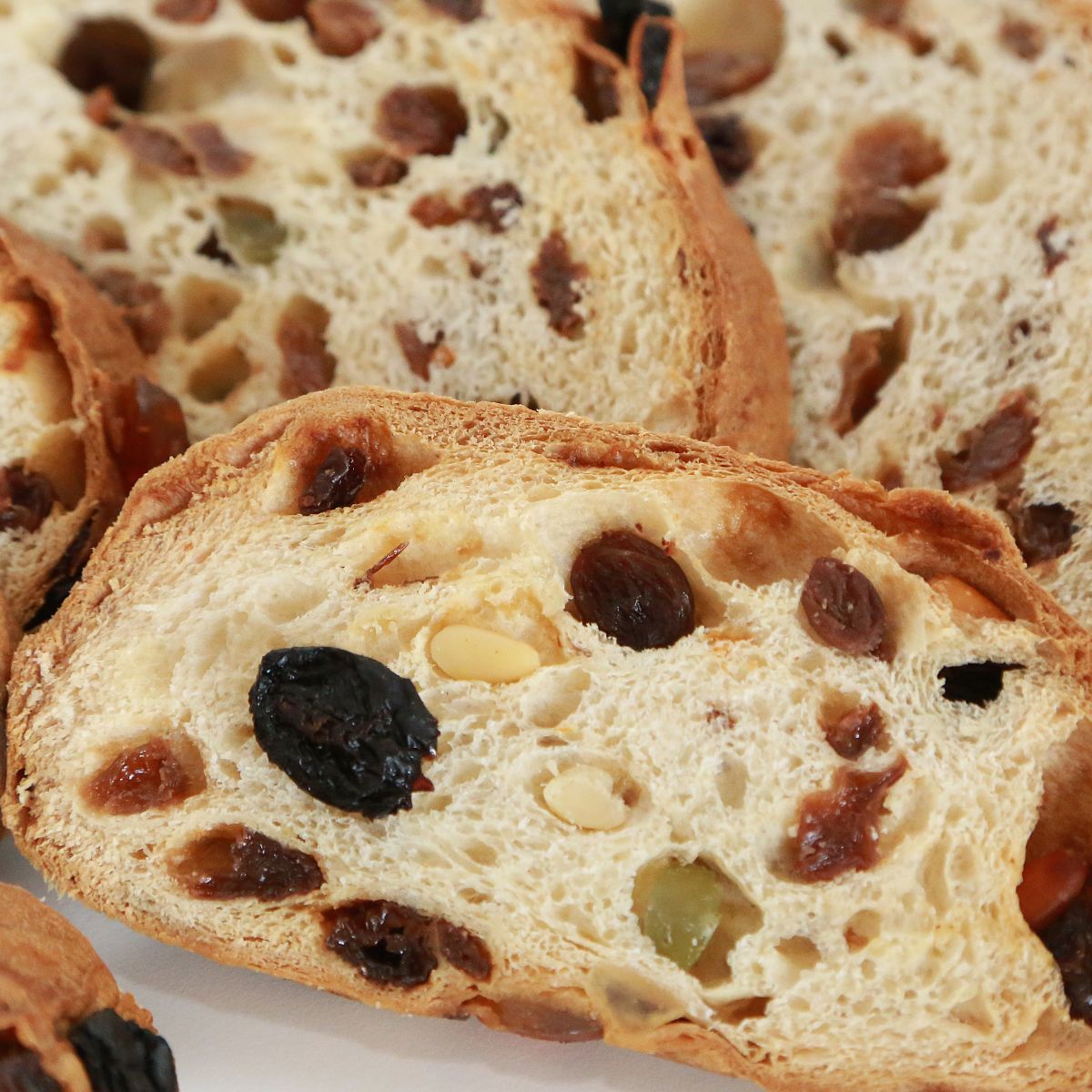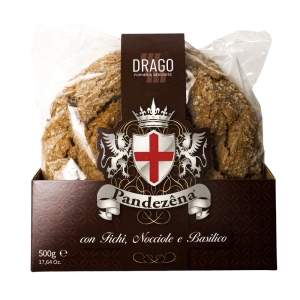.jpg)
The panettone genovese... or rather the pandolce!
If you ask anyone in Genoa about the Genoese panettone, chances are they will look at you a little puzzled... in fact, in the city, the local Christmas cake par excellence is called 'pandolce' and not panettone.
Incidentally, not one but two traditional versions of this cake are produced: pandolce basso (low pandolce) and pandolce alto (high pandolce). One pandolce is better than the other, so let's find out together how they differ.
Pandolce basso (Low Pandolce)
The pandolce basso (low pandolce) is immediately distinguishable, even to the eye, from the rest of the Christmas cakes because it is a leavened pastry: the yeast used is that for cakes, and in fact when it was invented this pandolce was also known as 'pandolce svelto' (fast pandolce). It's crumbly and buttery, and one bite leads to another!

It is believed to be a more modern recipe than the alto pandolce (high paldolce) and its success in the city right from the start meant that it was then produced all year round, not just for Christmas. In fact, the pandolce basso is a cake that is brought to the table every time there is an important family meal.
Pandolce basso recipe
Compared to the pandolce alto, this pandolce can be prepared in a short time. It does not need to be left to rise and is baked directly after forming.
.jpg)
The ingredients for the low pandolce
- 500 grams of 00 flour
- 150 grams of sugar
- 150 grams of butter
- 1 egg
- 1 sachet of baking powder
- 1 tablespoon orange blossom water
- 1 pinch of salt
- 25 grams of marsala
- 300 grams of sultanas
- 75 grams of candied citron
- 75 grams of candied orange peel
- 50 grams pine nuts
The preparation of the low pandolce
Take the butter out of the fridge, cut it into cubes and let it cool to room temperature. Meanwhile, soak the sultanas and then dry them well. Mix the flour with the baking powder. Then cream together the butter with the sugar, then the egg, marsala and orange water. It is best if you use a food processor. Finally mix everything together with the flour, baking powder and a pinch of salt until a uniform dough is obtained.
Add the pine nuts, sultanas and candied fruit, adding to the mixture from time to time until you have incorporated everything. In the end, the consistency should be that of a shortcrust pastry and not an elastic dough. Give it the typical shape and make cuts at the top. Bake for 50 minutes at 180°C.
Pandolce alto (High Pandolce)
Of the two, this pandolce is the one that most resembles a panettone. Compared to the Milanese Christmas cake, our pandolce is more delicate and less steaming, and it is, as its name already tells us, a 'sweet bread' literally "pan dolce"! Rich in pine nuts, sultanas and candied fruit, it is soft and has an even alveolation. It is made with natural sourdough and takes at least two days to produce.
.jpg)
Pandolce 'alto' is thought to be the oldest, but there is no precise date of its origin. However, we can be fairly certain that it was already produced in the city in the 18th century. It is more difficult to make at home because of the difficulty of having to manage the long leavening process (one above all a constant temperature in the middle of winter). That's why if you want to taste it, or if you want to give it as a gift, you can find it for sale on our site, and make your life easier!
Pandolce alto recipe
The preparation of high pandolce requires the use of mother yeast, which must also be very active: when you refresh the yeast after 4 hours it must then triple its volume. This is why it is usually recommended to do three refreshments in a row, starting in the morning and then arriving in the evening with the active yeast to add to the dough.

The ingredients of high pandolce
First dough
- 250 grams of flour for panettone
- 250 grams sourdough, refreshed 3 times
- 150 grams of butter
- 150 grams of sugar
- 60 millilitres of water
- 20 millilitres of milk
- 1 tablespoon of orange blossom water
Second dough
- 100 grams of flour for panettone
- 50 grams of sugar
- 50 grams of butter
- 1 pinch of salt
- 250 grams of sultanas
- 50 grams pine nuts
- 75 grams of candied citron
- 75 grams of candied peel
- to taste Marsala
The preparation of high pandolce
We start in the morning with the first refreshment of the mother yeast and repeat the operation twice more until the yeast triples in volume in 4 hours. So this phase will take up the day for 12 hours. Then once the yeast is mature and active, we can proceed with the first dough. We must be careful how we incorporate the butter: it is advisable to keep it at room temperature to make it more workable and then to add it little by little.
Once the first dough has risen, it is left to rise overnight inside a container in a fairly warm (for the season) room at about 26°C, usually the oven at home with the light on. In the morning of the next day, the other ingredients are added to the first dough, leaving the dried fruit and pine nuts to be added a little at a time. To help the dough rise, we recommend warming the sultanas and dried fruit slightly.
When we have incorporated all the ingredients we let the dough rest for half an hour and then shape it for the first time. Then once again we give it a dome shape (pirlatura) and put a dome around our pandolce to make it hold its shape. Then we leave the dough covered to rise for 7 to 8 hours in a warm place. When the pandolce has risen well, we make a triangular cut on the dome and bake at 190°C for 50 minutes.

.jpg)




